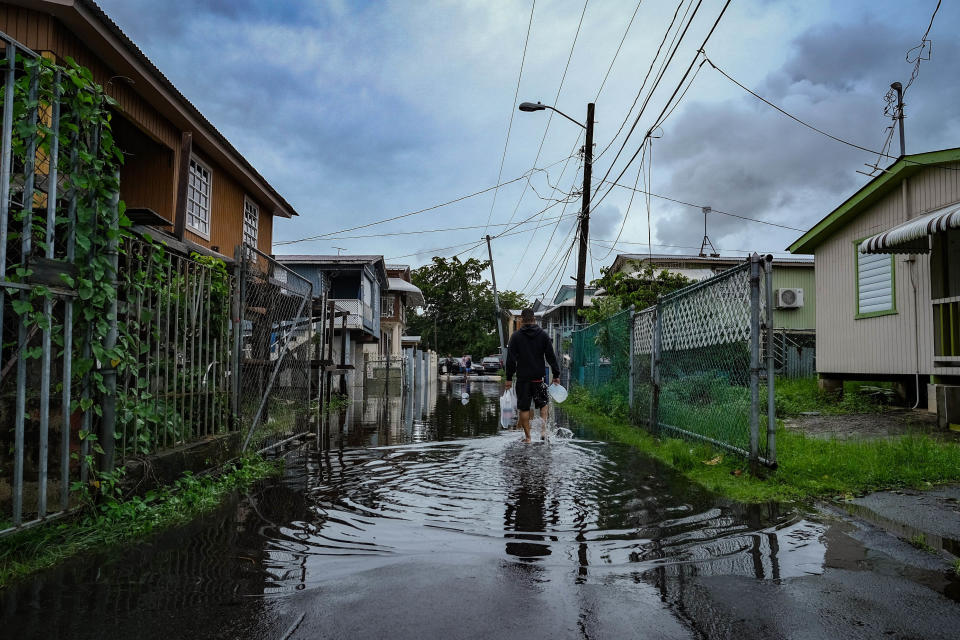Hurricane Fiona nears Bermuda after devastating Puerto Rico and Dominican Republic
Hurricane Fiona moved toward Bermuda on Thursday after it left a devastating path of destruction in the Dominican Republic and Puerto Rico, authorities said.
Tropical storm conditions were beginning on Bermuda around midnight Friday as the Category 4 storm continued to move north toward the island’s western edge, the National Hurricane Center in the U.S. said.
Hurricane conditions were expected in Bermuda overnight, forecasters said. The storm had maximum sustained winds of 130 mph, the hurricane center said.
While the storm’s center was about 195 miles west of Bermuda, tropical-storm-force winds extended outward by up to 275 miles, the agency said. Hurricane-force winds extended up to 115 miles.
A hurricane warning was in effect late Thursday for Bermuda, Prince Edward Island, Isle-de-la-Madeleine, Nova Scotia from Hubbards to Brule, and Newfoundland from Parson’s Pond to Francois, according to the hurricane center.

The British territory was expected to get 2 to 4 inches of rain and wind gusts of up to 75 mph. The heaviest rains in Bermuda are expected to fall from 2 a.m. to 10 a.m.
“As Hurricane Fiona approaches as a Category 4 on Friday, I encourage everyone to properly prepare for this storm,” Bermuda Premier David Burt said in a statement Thursday. “Let’s all remember to check on as well as look out for your seniors, family and neighbors. Stay safe.”
After it passes Bermuda, Fiona will target the Atlantic edges of Canada and is likely make landfall near eastern Nova Scotia on Saturday morning.
Fiona could weaken to a Category 2 storm or an extratropical cyclone, but there’s still the threat of significant damage to Nova Scotia, Prince Edward Island and Newfoundland.
The system could reach Quebec and southeastern Labrador early Sunday. Rainfall across Atlantic Canada will be 3 to 10 inches, bringing the threat of flooding.
“It’s going to be a very large storm when it does make landfall,” said Bob Robichaud, an emergency preparedness meteorologist for Environment Canada. “This is going to cover a fairly large area.”
The damage already left by Fiona could take weeks, months or even years to repair.
At least 8,708 homes in the Dominican Republic have been damaged or destroyed, while 210,433 people are living without power and at least 725,246 don’t have water service, according to the Center of Emergency Operations.
Much of Puerto Rico was still without power Thursday as temperatures neared 100 degrees, triggering an excessive heat warning.
With no power and trees toppled on roadways, even reaching the most storm-damaged areas of the island remained challenging.
President Joe Biden said Thursday he’s committed to “100% federal funding for debris removal, search and rescue, power and water restoration, shelter and food for the whole month” in Puerto Rico.
“We’ll be with the Puerto Rico folks ... until this is done, until we recover,” Biden told reporters in New York City after a meeting with Gov. Kathy Hochul; Mayor Eric Adams; Deanne Criswell, the administrator of the Federal Emergency Management Agency; and — via videoconference — Puerto Rico Gov. Pedro Pierluisi.
This article was originally published on TODAY.com

 money
money 